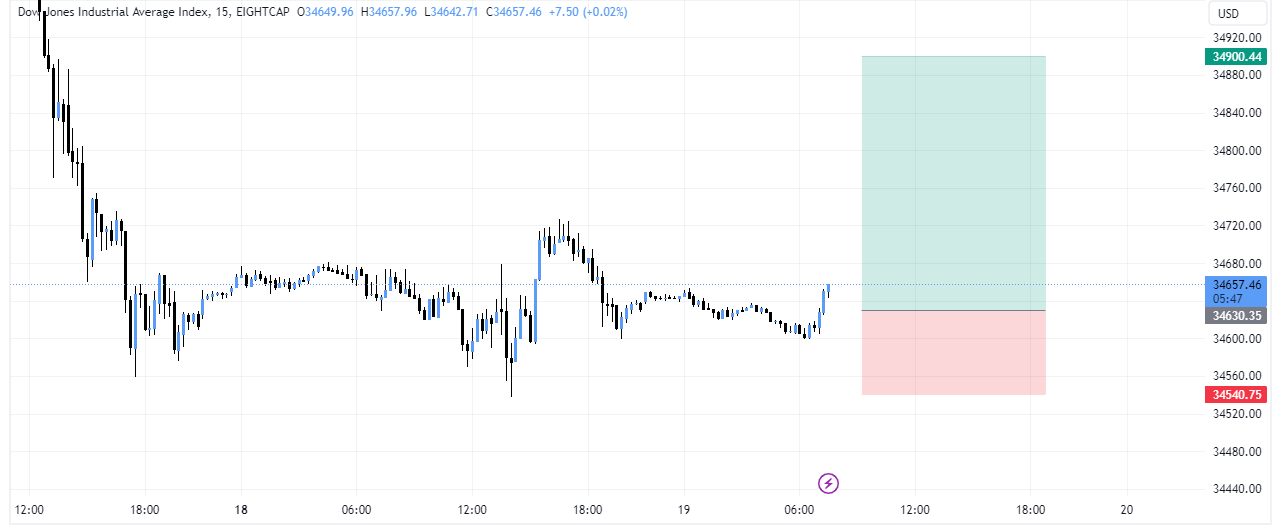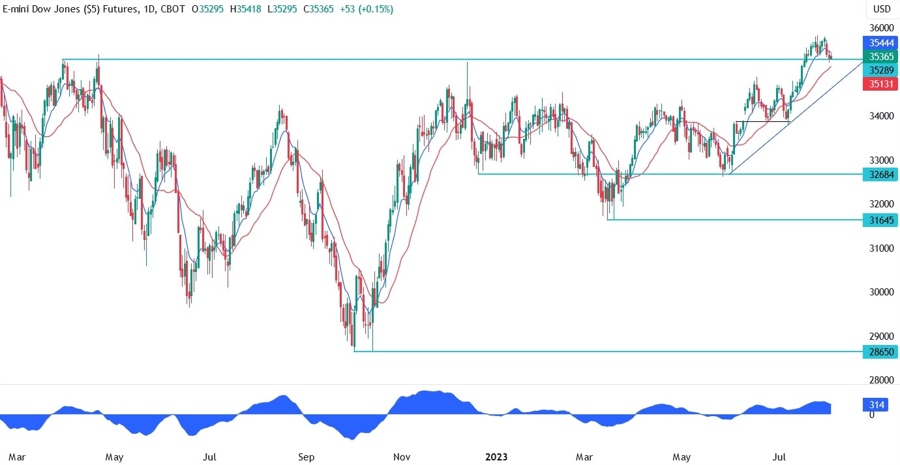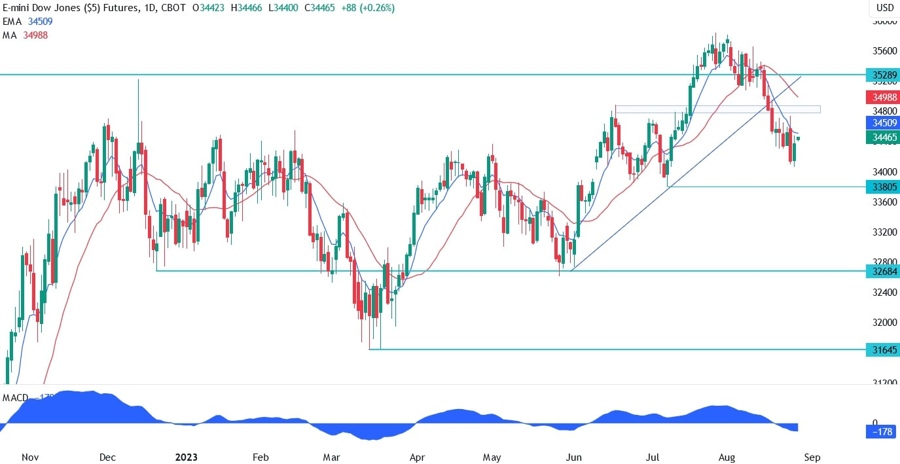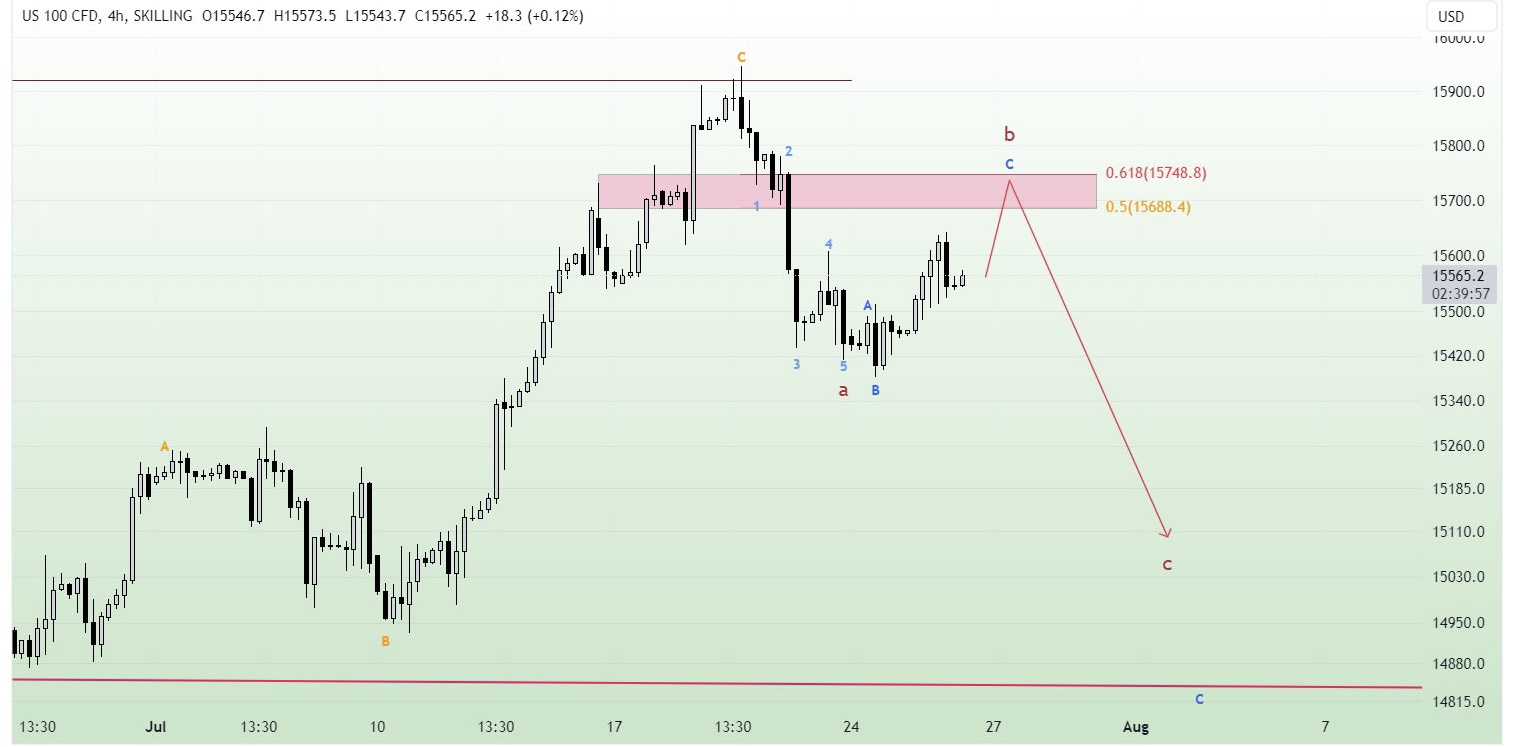S&P/TSX Composite Index
Parent Index
NA
Indices informations
Listed Exchanges
| Toronto Stock Exchange |
Related Instuments
| S&P TSX Capped Composite |
| Dow Jones Industrial Average |
Sector Represented
| Consumer Defensive |
| Consumer Cyclical |
| Financial Services |
| Energy |
| Real Estate |
Indices
- BSE SENSEX
- CAC 40
- CBOE NASDAQ-100 Volatility Index (VXN)
- CBOE Volatility Index (VIX)
- China50-FTSE China A50 Index
- DAX
- DAX PERFORMANCE-INDEX-GDAXI
- DE40-Germany 40 Index DAX
- Dollar Index USDX-DXY-DX-Dixie
- Dow Jones Industrial Average-DJIA
- EURO STOXX 50 SX5E
- FTSE 100 Index-UK100 Index
- Germany 30
- Hang Seng Index
- IBEX 35-Spain 35
- NASDAQ Composite
- NASDAQ-100
- Nikkei 225
- Russell 2000 Index
- S&P/ASX 200
- Singapore Blue Chip Index-STI
- Swiss Market Index (SMI) Switzerland Blue Chip Index
- TecDax Price Index
- TECHDE30-Germany Tech 30 Index
- US Tech 100 Index UT100
- US2000-US Small Cap 2000 Index
- US30-US Wall Street 30 Index
- US30M- US Wall Street 30 Index M
- US500-S&P 500 (GSPC, INX, SPX)
- US500-US SPX 500 Index
- US500M-S&P 500 Mini
- All Ordinaries
- Amsterdam Exchange Index AEX index
- ATX-Austrian Traded Index (ATX)
- BEL 20
- BELEX15
- BIRS
- BIST-Borsa Istanbul
- CROBEX
- EGX 30 Index Egypts Leading Stock Market Index
- FTSE All-Share Index
- FTSE Bursa Malaysia Index-KLCI Index
- FTSE MIB-FTSE MIB 40
- Índice Bursátil Caracas (IBC)
- Índice Bursátil de Capitalización-The General Index
- Indice de Precios y Cotizaciones
- KOSPI
- KSE 100 Index
- MDAX
- MERVAL
- MICEX-The MOEX Russia Index
- OBX Index
- OMX Copenhagen 20 (OMXC20)
- OMX Helsinki 25 (OMXH25)
- OMX Stockholm 30 (OMXS30)
- PSE Index (PSEi)
- PSI20-PSI-20
- S&P/NZX 50 Index
- S&P/TSX 60
- S&P/TSX Composite Index
- S&P/TSX Venture Composite Index
- SOFIX
- SSE Composite Index (上证综指) Shanghai Composite Index
- Straits Times Index (STI)
- SZSE Component Index (深证成指)
- TA-125 Tel Aviv 125 Index
- Taiwan Capitalization Weighted Stock Index (TAIEX)
- The Indice de Precio Selectivo de Acciones- IPC
- CBOE NASDAQ-100 BuyWrite Index (BXN)
- Hang Seng China H-Financials Index
- IBOVESPA-The Bovespa Index-Brazil Stock Exchange Index
- NASDAQ Financial-100
- SDAX – Small cap
- TecDAX
- aaa
- Amex Gold BUGS Index
- Amex Oil Index
- AScX index – Small cap
- ASE Weighted Index
- Athex 20
- Barrons 400 Index
- BELEXline
- BET-10
- BSE DCI
- BSE FCI
- BUMIX – Mid cap
- BUX – Large cap
- CA60-Canada 60 Index
- CAC All Share
- CAC All-Tradable
- CAC Large 60
- CAC Mid & Small
- CAC Mid 60
- CAC Next 20
- CAC Small
- Capital Markets Index
- CASPI
- CBOE DJIA BuyWrite Index (BXD)
- CBOE S&P 500 BuyWrite Index (BXM)
- CBV Index
- CBV Real Estate Index
- CECEEUR
- Central European Blue Chip Index – Regional large cap
- ChinaH-Hong Kong China H-shares Index
- COLCAP
- Colombo Stock Exchange Sector indices (CSE Sectors)
- CROBIS
- CSC X
- CSE 30
- CSE50
- CSI
- CSI 100 Index (中证100指数)
- CSI 300 Index (沪深300指数)
- Dow Jones Global Titans 50
- Dow Jones Transportation Average
- Dow Jones Utility Average
- DSE
- DSEX
- DSM200
- EGX 100 Index
- EGX 50 Index
- EGX 70 Index
- ERS10
- FIRS
- FT 30 Index
- FTSE 350 Index
- FTSE AIM All-Share Index
- FTSE AIM UK 50 Index
- FTSE All-World index series
- FTSE Fledgling Index
- FTSE Italia Mid Cap
- FTSE MID 250 Index
- FTSE SmallCap Index
- FTSE techMark Index
- FTSE/Athex Large Cap
- FTSE/JSE All Share Index
- FTSE/JSE Top 40 Index
- FTSEurofirst 300 Index
- FTSEurofirst Euro Supersector Indices
- GSE All-Share Index
- Hang Seng China Enterprises Index
- Hang Seng China-Affiliated Corporations Index
- HK50
- IDX Composite
- IGBC
- IPSA
- ISEQ 20-The Ireland Overall Stock Exchange Index-ISEQ20
- IT40-Italy 40 Index
- Jakarta Islamic Index (JII)
- Jamaica Stock Exchange (JSE)
- KASE
- KMI 30 Index
- KOSDAQ
- KSE All Share Index
- KSE-30 Index
- Kuala Lumpur Composite Index
- LASI
- LQ-45
- LuxX Index – Luxembourg Stock Exchange
- MADEX index
- Madrid Stock Exchange General Index
- MASI index
- MESDAQ
- MIDDE50-Germany Mid 50 Index
- MIDDE60-Germany Mid 60 Index
- Milanka Price Index (MPI)
- MSCI EAFE
- MSCI GCC
- MSCI Hong Kong Index
- MSCI World
- MSM-30
- NEPSE Index – Nepal Stock Exchange
- NETH25
- NIFTY 100 LOW VOLATILITY 30
- NIFTY 200
- NIFTY ALPHA 50
- NIFTY BANK
- NIFTY CPSE
- NIFTY ENERGY
- NIFTY FINANCE
- NIFTY FMCG
- NIFTY INDIA CONSUMPTION
- NIFTY INFRA
- NIFTY IT
- NIFTY MEDIA
- NIFTY METAL
- NIFTY MIDCAP 100
- NIFTY MIDCAP 50
- NIFTY MIDCAP LIQUID 15
- NIFTY MIDSMALLCAP 400
- NIFTY MNC
- NIFTY Next 50
- NIFTY PHARMA
- NIFTY PSE
- NIFTY PSU BANK
- NIFTY PVT BANK
- NIFTY REALTY
- NIFTY SERV SECTOR
- NIFTY SMALLCAP 100
- NIFTY SMALLCAP 250
- NIFTY SMALLCAP 50
- NIFTY100 EQUAL WEIGHT
- NIFTY100 LIQUID 15
- NIFTY200 QUALITY 30
- NIFTY50 EQUAL WEIGHT
- Nor25-Norway 25 Index
- NSE 30 Index
- NSE All Share Index
- NSE NIFTY 50
- NYSC Arca Major Market Index
- NYSE American Composite Index
- OMX Iceland 15 (discontinued)
- OMX Iceland 6
- OMX Stockholm PI (OMXSPI)
- OMX Vilnius (OMXV)
- OTCM QX ADR 30 Index
- Palisades Water Index (ZWI)
- PFTS index
- Philadelphia Gold and Silver Index
- PHLX Semiconductor Sector
- PSE All Shares Index
- PSE Financials Index
- PSE Mining and Oil Index
- PSI/GERAL
- PX Index
- RTS Index (RTSI)
- Russell 1000
- Russell 2500
- Russell 3000
- Russell MidCap
- Russell Small Cap Completeness
- S&P 100
- S&P 1500
- S&P Asia 50
- S&P BSE 500
- S&P Europe 350
- S&P Global 100
- S&P Global 1200
- S&P Latin America 40
- S&P MidCap 400
- S&P MidCap 400/BARRA Growth
- S&P MidCap 400/BARRA Value
- S&P SmallCap 600
- S&P SmallCap 600/BARRA Growth
- S&P SmallCap 600/BARRA Value
- S&P Vietnam 10 Index
- S&P/ASX 20
- S&P/ASX 300
- S&P/ASX 50
- SA40-South Africa 40 Index
- SBF 120
- SE30-Sweden 30 Index
- SET Index
- SET100 Index
- SET50 Index
- Slovak Share Index
- SMI Expanded
- SMI MID
- SPBLPGPT
- SSE 180 Index (上证180指数)
- SSE 50 Index (上证50指数)
- STOXX Europe 600
- SWI20-Switzerland 20 Index
- Swiss Leader Index (SLI)
- Swiss Performance Index (SPI)
- SZSE 100 Index (深证100指数)
- SZSE 200 Index (深证200指数)
- SZSE 300 Index (深证300指数)
- TA-35 Index
- TA-90
- Tadawul
- TEDPIX
- TEPIX
- The Global Dow
- The GSE Composite Index.
- THETAUSD Theta Network Token vs US Dollar
- TOPIX
- Trinidad and Tobago Stock Exchange (TTSE)
- UBS 100 Index
- Value Line Composite Index
- VN Index
- WIG-Warszawski Indeks Giełdowy
- WIG30
- Wilshire 4500
- Wilshire 5000
- Zimbabwe Industrial Index
- Zimbabwe Mining Index
The S&P/TSX Composite Index: A Snapshot of the Canadian Stock Market
The S&P/TSX Composite Index, often referred to as the TSX, is the primary stock market index for Canada. It serves as a benchmark for the country’s equity market and provides investors with an overview of the performance of Canadian stocks.
The index is maintained by S&P Dow Jones Indices and is composed of about 250 of the largest and most liquid stocks listed on the Toronto Stock Exchange (TSX). These stocks represent various sectors of the Canadian economy, including finance, energy, healthcare, technology, and more.
As a market-weighted index, the S&P/TSX Composite Index gives more weight to companies with larger market capitalizations. This means that the performance of larger companies has a greater impact on the overall index movement compared to smaller ones.
Investors and analysts closely watch the TSX as it represents a broad cross-section of the Canadian economy. It serves as a key indicator of the overall health and direction of the Canadian stock market.
Components of the S&P/TSX Composite Index
The S&P/TSX Composite Index includes companies from diverse industries, allowing investors to track the performance of various sectors within the Canadian stock market. Some of the notable sectors represented in the index are:
- Financials: Major Canadian banks and financial institutions, such as Royal Bank of Canada, Toronto-Dominion Bank, and Bank of Nova Scotia.
- Energy: Companies involved in the production and exploration of oil, gas, and other energy sources, including Suncor Energy, Canadian Natural Resources, and Enbridge.
- Technology: Tech companies operating in Canada, like Shopify, Constellation Software, and OpenText.
- Healthcare: Canadian pharmaceutical companies, biotech firms, and healthcare providers, such as Canopy Growth, Bausch Health Companies, and Extendicare.
- Consumer Discretionary: Retailers, consumer goods companies, and entertainment businesses, including Restaurant Brands International (Tim Hortons, Burger King), Magna International, and Cineplex.
Importance to Investors
The S&P/TSX Composite Index is widely regarded as the benchmark for the Canadian stock market. It provides investors with insights into the overall performance of Canadian equities and helps them make informed investment decisions.
By tracking the TSX, investors can gauge the health of specific sectors within the Canadian economy and identify trends that could impact their investment strategies. For example, a rise in the financial sector might indicate a strong banking industry, while a drop in energy stocks might reflect a decline in oil prices or related factors.
Additionally, the TSX serves as a basis for a range of financial products, including index funds and exchange-traded funds (ETFs), which allow investors to gain exposure to the Canadian stock market as a whole or specific sectors within it.
Conclusion
The S&P/TSX Composite Index is an important tool for investors seeking to understand the performance of the Canadian stock market. With its broad representation of various sectors, it provides a snapshot of the country’s economic health and helps guide investment decisions.
Whether you are a seasoned investor or someone curious about the Canadian stock market, keeping an eye on the S&P/TSX Composite Index will give you valuable insights into the ever-changing landscape of Canadian equities.
S&P/TSX Composite Index Key Data
The S&P/TSX Composite Index is the most widely followed benchmark index for the Canadian equity market. It represents about 70% of the total market capitalization on the Toronto Stock Exchange (TSX) and includes over 200 companies from various sectors.
Overview
The S&P/TSX Composite Index provides investors with a comprehensive view of the Canadian stock market. It measures the performance of both large-cap and small-cap stocks, covering a broad range of industries such as financials, energy, materials, healthcare, technology, and more.
Key Data
- Index Ticker: The index ticker symbol for the S&P/TSX Composite Index is “TXCX”. Investors can use this ticker to track the index’s performance on financial websites or through their brokerage accounts.
- Market Capitalization: As of [insert date], the S&P/TSX Composite Index had a total market capitalization of [insert market cap]. This figure represents the combined value of all the companies included in the index.
- Weighted Index: The S&P/TSX Composite Index is a weighted index, which means that the performance of individual stocks within the index has a different impact on the overall index value based on their market capitalization. Larger companies have a higher weighting, while smaller companies have a lower weighting.
- Price and Performance: The S&P/TSX Composite Index is calculated using a base level of 1,000 as of [insert base year]. Investors can track the price and performance of the index on a daily basis to gauge the overall health of the Canadian equity market.
- Index Composition: The S&P/TSX Composite Index consists of various sectors, including financials, energy, materials, healthcare, technology, and more. It includes companies such as [insert examples of companies]. The index composition is periodically reviewed and adjusted to ensure its representation of the Canadian equity market remains up to date.
Importance
The S&P/TSX Composite Index is considered a key indicator of the Canadian stock market’s health and overall economic performance. As it represents a wide range of companies from different sectors, changes in the index value can reflect shifts in investor sentiment, industry trends, and the broader economy.
Investors and financial professionals closely monitor the S&P/TSX Composite Index to make informed investment decisions, assess portfolio performance, and gain insights into the Canadian equity market’s direction.
Conclusion
The S&P/TSX Composite Index serves as an essential benchmark for investors seeking exposure to the Canadian equity market. Its comprehensive coverage, weighted index methodology, and diverse composition make it a reliable measure of the market’s performance and an invaluable tool for tracking the Canadian economy’s health.
S&P/TSX Composite Index index-linked products: A gateway to diversified investment
The S&P/TSX Composite Index is the primary stock market index in Canada, representing a broad spectrum of companies listed on the Toronto Stock Exchange. As an investor, gaining exposure to this benchmark index can be achieved through various investment vehicles known as S&P/TSX Composite Index index-linked products.
Index-linked products are financial instruments designed to track the performance of a specific market index, allowing investors to gain exposure without having to directly own all the underlying securities within the index. In the case of the S&P/TSX Composite Index, these products provide a convenient way to participate in the Canadian equity market and benefit from its potential growth.
There are several types of S&P/TSX Composite Index index-linked products available to investors:
- Exchange-Traded Funds (ETFs): ETFs are one of the most popular and accessible forms of index-linked products. These funds trade on stock exchanges like individual stocks, providing investors with flexibility and liquidity. By investing in an S&P/TSX Composite Index ETF, investors can achieve instant diversification across various sectors and industries represented within the index.
- Index Mutual Funds: Similar to ETFs, index mutual funds aim to replicate the performance of a specific index. However, unlike ETFs, index mutual funds are bought and sold directly through the fund company at the end-of-day net asset value (NAV). These funds are suitable for long-term investors looking for a more traditional approach to index investing.
- Derivatives: Derivatives such as futures and options also offer exposure to the S&P/TSX Composite Index. These financial instruments allow investors to speculate on the future price movements of the index or hedge their existing positions. Derivatives can be more complex and require a deeper understanding of the market, making them better suited for experienced investors.
Investing in S&P/TSX Composite Index index-linked products offers several benefits:
- Diversification: The S&P/TSX Composite Index consists of over 200 companies from various sectors, including finance, energy, technology, and healthcare. By investing in index-linked products, investors gain exposure to a diversified portfolio of Canadian stocks, reducing company-specific risk.
- Cost-effectiveness: Compared to actively managed funds, index-linked products tend to have lower expense ratios. As these products aim to replicate the performance of an index rather than outperform it, they require less frequent trading and lower management fees.
- Transparency: The composition of the S&P/TSX Composite Index is readily available, allowing investors to understand the underlying holdings and sector allocations within the index-linked products. This transparency enables investors to make informed decisions based on their investment objectives and risk tolerance.
- Liquidity: ETFs and other exchange-traded index-linked products offer liquidity as they can be bought and sold throughout the trading day at prevailing market prices. This liquidity allows investors to enter or exit positions quickly without significant impact on the market.
However, it is important for investors to consider certain factors before investing in S&P/TSX Composite Index index-linked products:
- Market volatility: The performance of index-linked products is directly influenced by the ups and downs of the underlying index. Investors should be prepared for potential fluctuations in value, as market volatility can impact returns.
- Tracking error: Index-linked products aim to replicate the performance of the underlying index. However, there may be slight differences in returns due to factors like management fees, trading costs, and imperfect tracking mechanisms. Investors should assess the historical tracking error of a product before making an investment decision.
- Investment horizon: Investors should align their investment horizon with the characteristics of the chosen index-linked product. Short-term traders might prefer derivatives, while long-term investors might opt for ETFs or index mutual funds.
In conclusion, S&P/TSX Composite Index index-linked products provide investors with a convenient and cost-effective way to gain exposure to the Canadian equity market. These products offer diversification, transparency, liquidity, and flexibility, allowing investors to capture the potential growth of the market. However, investors should carefully evaluate their risk tolerance, investment objectives, and the specifics of each product before making any investment decisions.
Fundamental Summary
- Coming soon!!










